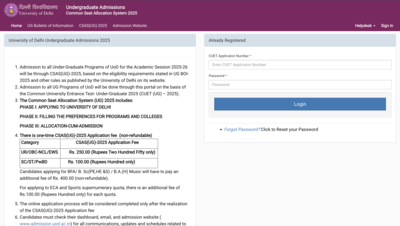Explained: Trump’s student loan reset—how interest resumes, what it costs SAVE borrowers, and what RAP will change in 2026

On 1 August 2025, a quiet but consequential shift hit nearly eight million Americans enrolled in the Biden-era Saving on a Valuable Education (SAVE) plan. After more than a year of relief, interest has resumed on their federal student loans, turning a fragile pause into a ticking debt bomb.The US Department of Education (DoE) says it is merely “complying with a court injunction” issued in April 2025, which partially struck down SAVE. But, critically, the injunction did not order interest-free forbearance to be halted. This decision is therefore an administrative recalibration under the new leadership of Education Secretary Linda McMahon, who has made clear that “taxpayers won’t foot the bill for promises federal courts have deemed unlawful.”
The scale of impact: 8 million borrowers, $3,500 a year in added costs
According to the Student Borrower Protection Center (SBPC), resuming interest will cost the typical SAVE borrower $300 per month—over $3,500 annually—in interest alone.The SBPC further notes that over 40% of SAVE borrowers live below 225% of the federal poverty line, meaning they earn $35,213 or less for a single person, or up to $72,338 for a family of four. These are households that already operate on thin margins, for whom an additional few hundred dollars a month is not just inconvenient—it’s destabilising.This population profile is not disputed by the DoE, yet the department has opted to let balances grow during forbearance—a policy that builds future repayment pressure into a group least able to bear it.
The legal backstory: Courts vs. White House promises
The SAVE plan was rolled out in 2023 as part of Biden’s attempt to reshape income-driven repayment. It allowed payments as low as $0 per month for low-income borrowers, with no interest accumulation, effectively slowing or stopping balance growth for many.Federal courts repeatedly challenged this design, arguing that the executive branch exceeded its authority by promising mass loan forgiveness. In April 2025, a court issued an injunction halting further SAVE relief measures. The DoE now claims the interest-free pause lacked a legal basis.But apparently, no judge explicitly ordered interest to resume. It’s a deliberate pivot towards tightening repayment compliance under the Trump administration.
The next phase: SAVE ends, RAP takes over in 2026
Under the July 4, 2025 tax and spending bill, SAVE is being legislatively dismantled. On 1 July 2026, it will be replaced by the Repayment Assistance Plan (RAP), which significantly changes the rules:
- Payments will be calculated on gross income, not discretionary income.
- Under RAP, all borrowers must pay at least $10/month
- RAP allows interest to accrue on all unpaid balances.
- New borrowing caps and tighter Pell Grant eligibility criteria will reshape how much students and families can borrow in the first place
This effectively codifies a shift away from income-sensitive relief towards strict repayment enforcement, signalling that pandemic-era leniency is over, and that future debt management will be harsher.
Bottom line
The restart of interest accrual is not just a minor administrative tweak—it is a structural policy shift that will add thousands of dollars of unavoidable debt to millions of borrowers, particularly low-income households.Data from the SBPC makes the inequity clear: 40% of SAVE borrowers already live near or below subsistence thresholds, yet will now face an additional $3,500 annual interest burden they cannot meaningfully avoid.Coupled with operational backlogs and the looming rollout of RAP, this move marks a sharp U-turn from Biden-era relief to Trump-era enforcement, with legal ambiguity exploited to drive a policy preference: borrowers will pay, and they will pay sooner, regardless of their ability to do so.TOI Education is on WhatsApp now. Follow us here.





